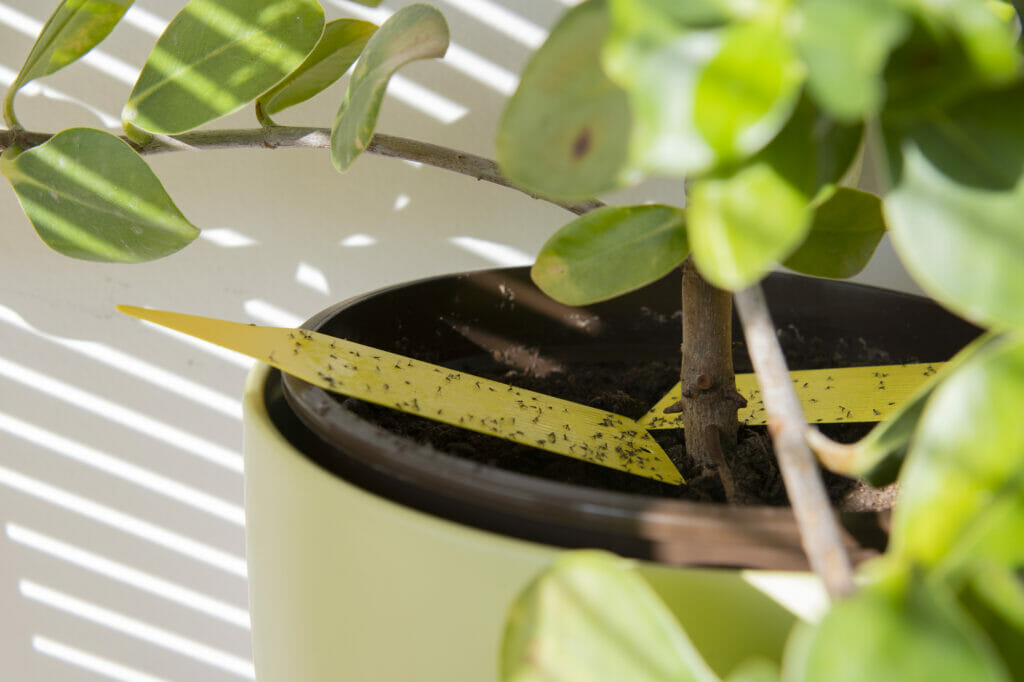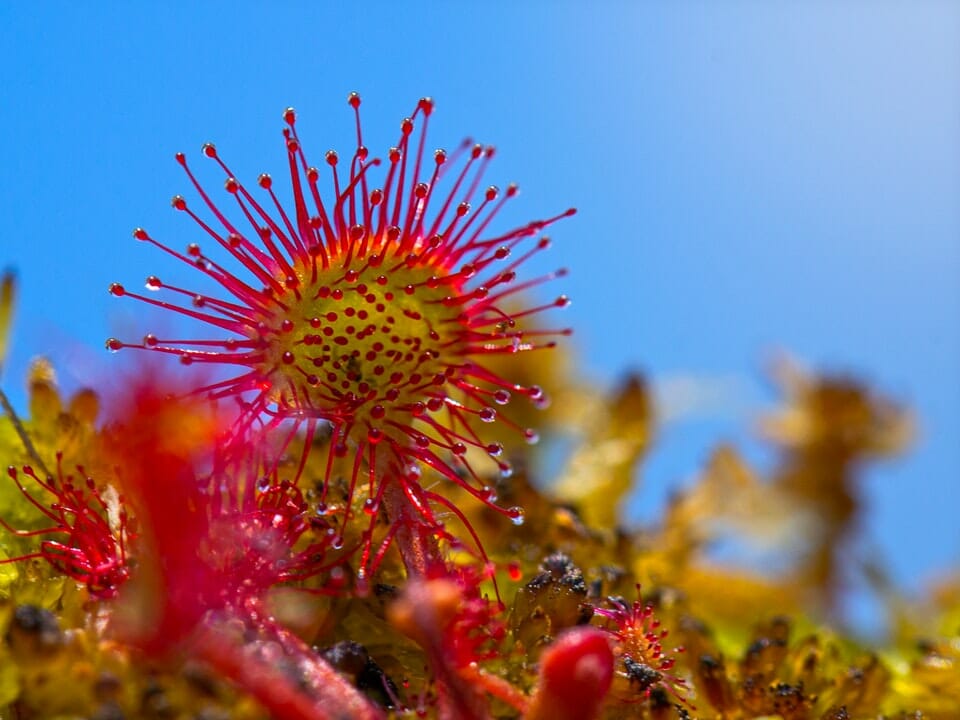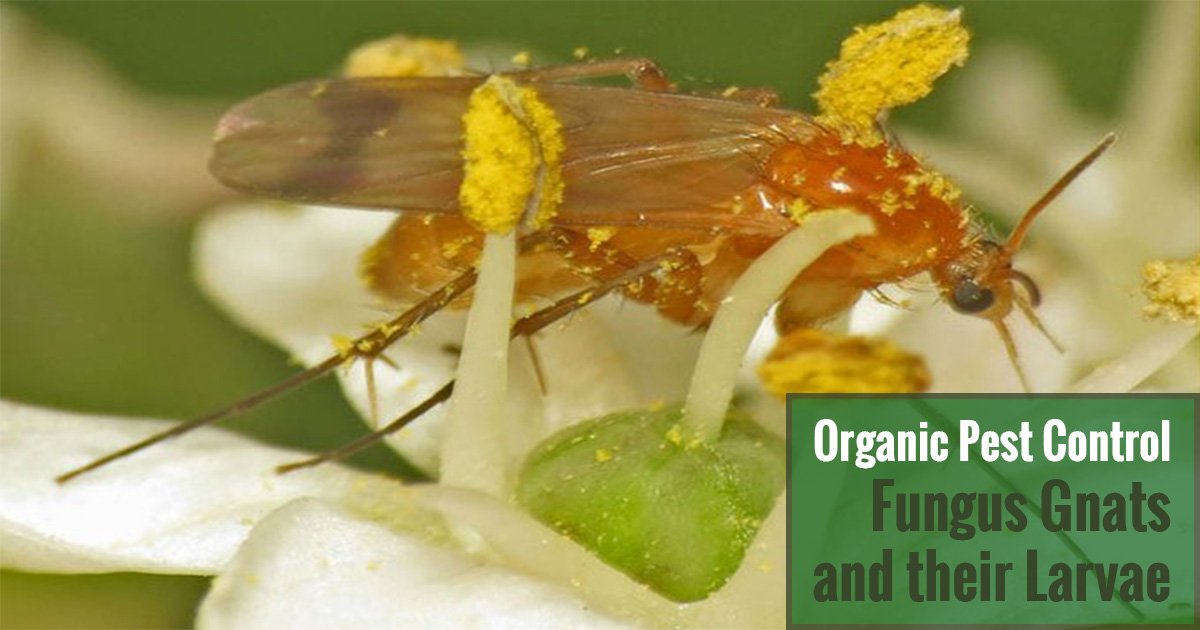You’ve probably seen fungus gnats hovering around your greenhouse or on top of the soil. They live and reproduce in damp areas, so if your soil does not dry out, chances are you’ll have fungus gnats. Although they don’t sting or bite, their presence is considered a disturbance as they damage and compromise the health of plants.
To get rid of fungus gnats, you’ll want to make the environment unsuitable to their reproduction. You can use methods such as removing decaying plant material, taking out weeds, and watering properly. Then, you can get rid of fungus gnats using the methods below.
The enclosed setting of a greenhouse makes it even harder to notice fungus gnats and control them. In this article, you’ll learn what causes a fungus gnat infestation and how you can get rid of them without damaging your plants.
What are fungus gnats and why are they in my greenhouse?
Fungus gnats belong to the insect families Sciaridae and Mycetophilidae. The former consists mostly of gall midges and dark-winged fungus gnats while the latter comprises the small flies known for their well-formed but spiny legs and the strongly humped thorax.
Adults are grayish-black, look like mosquitoes and prefer to fly around houseplants and inside damp greenhouses. Their larval stages are especially harmful to crops because they feed on the tender roots of plants.
Fungus gnats thrive and lay their eggs in damp areas of greenhouses, especially soils containing peat moss that’s known to retain water. If you have an infestation, it’s likely because your soil is not allowed to dry out properly, or because there’s a lot of moisture in the air.
Why are fungus gnats bad in a greenhouse?
Fungus gnats can cause serious problems in your greenhouse. While adult fungus gnats don’t cause much direct damage to plants in small numbers, their larvae can severely damage your plants. That’s because fungus gnats larvae feed on mulch, fungi, and plant roots.
Signs that fungus gnats and their larvae are damaging your plants can include yellowed leaves and stunted growth. In very serious cases, your plants may die if their roots are too damaged.
Fungus gnats love to feed on the tender roots of young plants. As they mature, they will lay eggs within the moist soil in order to reproduce. Like with many other pests, fungus gnats can bring disease to your greenhouse by spreading pathogens such as Pythium, Fusarium, and Thielaviopsis.
It’s safe to say that you don’t want these little gnats pitching their tent in your greenhouse, and that it’s important to reduce their population as much as possible. Whether you already have fungus gnats in your greenhouse or want to prevent them from causing trouble, make sure to keep reading.
How to prevent fungus gnats in your greenhouse
Even before fungus gnats have discovered your greenhouse, it’s important to take the necessary steps to prevent them from coming in and reproducing. Simply make your greenhouse less attractive for them using the tips below.
1. Don’t overwater your plants
Fungus gnats love abundant moisture. They appear in your greenhouse because it’s damp in the first place. So if you want to keep them away, you may need to reconsider your plant watering habits.
Fungus gnats avoid dry soils especially when they want to lay eggs. Reducing your watering can go a long way in making your greenhouse an unfriendly environment for both fungus gnats and their larvae. Allow soil to drain between waterings as much as possible without compromising the health of your plants.
If there is any standing water in the greenhouse, drain and allow the area to properly dry out. Make sure to fix any leaks if you have them.

2. Remove weeds and dead plant material
Fungus gnats are attracted to dead plant materials because that’s what they feed on. If you want them to stay away, you should create a weed-free greenhouse and discard any dead or decaying plant materials. Not only does this remove the gnats’ main food source, but it also goes a long way at preventing the spread of disease within your greenhouse.
3. Avoid using too much organic fertilizer
It’s a good idea to control how much organic fertilizer you add to your soil. Fungus gnats love decaying plant material, which can be found in compost and manure. Too much compost in the soil can also prevent the soil from draining properly, as compost has a higher water-holding capacity (which is good in the garden, but attracts fungus gnats in the greenhouse).
Moreover, excessive fertilizing can actually damage your plants and thereby provide more food source for the fungus gnats. That said, it’s actually good to apply organic fertilizer to promote plant growth, just don’t use it in excess.
4. Keep algae in check
Make sure to control algae in your greenhouse. Like moist soil, algae provides the perfect environment for fungus gnats to reproduce. Remove any algae in pots or on the surface of benches, tables, etc.
Not only will you be keeping your greenhouse clean, but you’ll be making it a more hostile environment for fungus gnats.
5. Avoid using peat moss in the winter
It’s especially important to avoid using water-holding organic materials such as peat moss during the winter. This is because winter can be a damp season with lower temperatures and more rain or snow.
If peat moss is unable to dry properly between waterings, it becomes the perfect environment for fungus gnats to breed and lay their eggs. If peat moss is already in your potting soil, you can take steps to minimize fungus gnats by allowing more time for it to drain, or by covering it with water-draining substrate and debris.
How to get rid of fungus gnats in your greenhouse
Fungus gnats aren’t very good at flying far, so you’ll mostly find them on top of damp soil. If you’ve noticed them in your greenhouse or if preventative measures aren’t working for you, keep reading to discover how to treat a fungus gnat infestation.
1. Attract and trap fungus gnats with yellow sticky traps
Fungus gnats are attracted to yellow sticky traps which are covered in a glue that, well, you guessed it: traps them. You can buy sheets to place directly on the soil or hang around the greenhouse. In no time at all the adult fungus gnats will be sticking all over these traps, making them unable to further reproduce in your greenhouse.
These traps are an amazing option to control fungus gnats at any stage of infestation. However, if your infestation is severe, you might consider methods that will additionally target the larvae.

2. Mix an organic fungus gnat trap
An easy, cheap, and effective method for controlling fungus gnats is to mix your own fungus gnat trap. Simply mix apple cider vinegar and a few drops of dish soap in a shallow bowl or cup. You can also add some water and sugar to make sure the trap is irresistible.
Stir the mixture well so it’s bubbly. The gnats will be attracted to the apple cider vinegar, while the dish soap creates surface tension that will make it impossible for them to get out.
You’ll quickly see how effective this trick is! Replace the mixture every few days or when full with gnats.
3. Control fungus gnats with beneficial nematodes
If you’ve got a severe fungus gnat infestation, you should consider a biological control method. For example, you can release nematodes which are parasitic to fungus gnats and their larvae. Particularly, Steinernema feltiae is a beneficial nematode that has been used to control fungus gnats effectively for decades.
Beneficial nematodes are a great option for helping you get rid of fungus gnats in your greenhouse without damaging your plants. They work by penetrating fungus gnat larvae and releasing bacteria that eventually kill the larvae. Beneficial nematodes also produce crystal proteins that help to get rid of fungus gnats.
Simply mix the nematodes in water and apply it into the soil. Alternatively, you can top-dress your soil with the nematodes directly. This is effective for as long as 48+ hours after application.
4. Get rid of fungus gnats with carnivorous plants
If you are looking for another natural and organic method to get rid of fungus gnats around your greenhouse, carnivorous plants can come to your rescue!
Carnivorous plants such as Butterwort and Sundew will trap and eat fungus gnats. These plants are covered in sticky nectar that attracts the gnats in a matter of minutes. However, you’ll need to take care of carnivorous plants just like any other plant. In addition to sufficient sunlight and water, they may need special care.
That said, Sundews are a great option for you if you’re interested in growing carnivorous plants. They can be purchased easily from many suppliers and they are very effective against fungus gnats and other flying pests.

5. Kill fungus gnats using diatomaceous earth
Diatomaceous earth is very helpful when you want to get rid of fungus gnats on your soil surface and plant leaves. It is always best to use food-grade DE in your greenhouse when trying to control pests.
Simply sprinkle diatomaceous earth over your soil surface and around your greenhouse when it’s dry (the powder loses its effectiveness when wet). DE is actually very sharp to these small insects and will cut them. Make sure to use protective materials while applying this powder.
6. Use chemical control as a last resort
Have you tried all the methods above and still have a fungus gnat infestation in your greenhouse? It may be time to consider chemical control as a last resort.
Most insecticides can instantly kill adult fungus gnats, including pyrethroid-based solutions. Because insecticides are applied topically, you’ll need to repeat the process once more larvae have emerged from the soil.
Make sure to pay attention to the soil over the weeks that follow to track the effectiveness of the application. If the fungus gnats persist, you may need to consider a more extreme solution such as replacing all of the soil in your greenhouse.
























